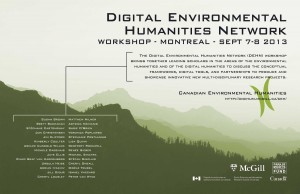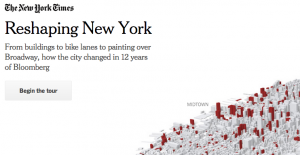This weekend I was at a neat workshop on Digital Environmental Humanities organized by Stephanie Posthumous at McGill University. You can see my workshop notes here, Digital Environmental Humanities Network. I was struck at the importance of research and activism from the humanities on the issue of the environment. Too often issues are framed as scientific or policy (social scientific). The humanities bring a historical, philosophical, ethical, and critical perspective that is needed.
The workshop brought together folks working in environmental humanities and others (like me) in the digital humanities to see if we could articulate a common research agenda. I was struck by similarities in the evolution of these two applied fields – including the tensions around interdisciplinarity. By the end I could see a useful collaboration to develop a suite of outreach venues for environmental humanities including:
- An environment for curators to pull together “issues” that include different media. This would have some of the features of the Journal of Digital Humanities, but not necessarily be a journal.
- One of the types of “issues” gathered could be e-books with media components suitable for teaching about the environment and culture.
- Another type of “issue” could be documentation from an arts intervention.
- Many of these issues and interventions could be designed from the beginning to have a hybrid existence. For example, documentation from an arts performance could be gathered in the curatorial environment and later edited into a catalogue for print publication.
- A related idea would be a NINES-like federated repository for finding, reviewing, and curating digital interventions.
- Crowdsourcing or citizen science type interface to bring other publics into the discussion.
- Online conferences to minimize the impact of our research on the environment. The idea would be to look at the impact of our research itself and try to find alternative ways of connecting while also asking about how we think about the impact of research on the environment.


